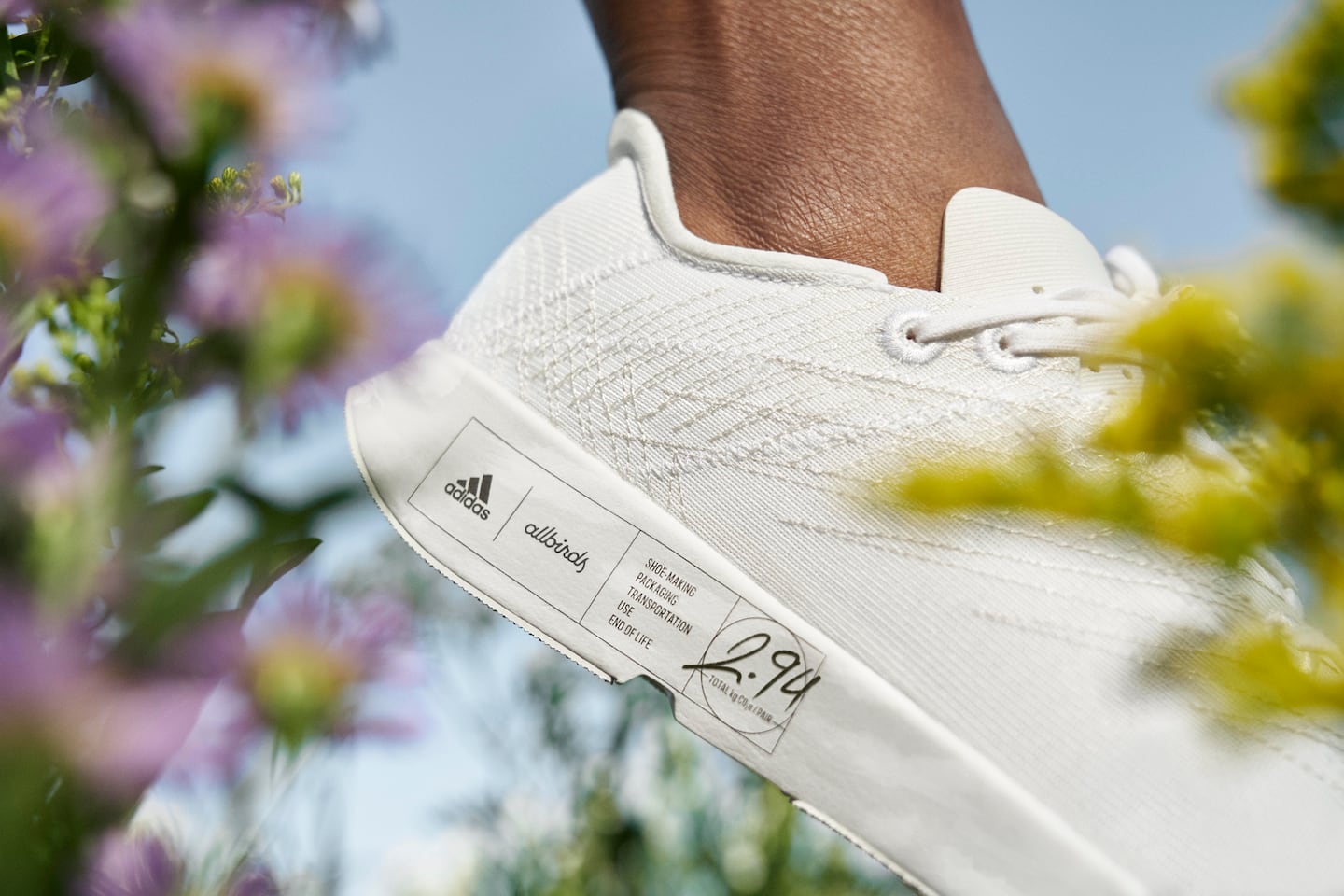
The Business of Fashion
Agenda-setting intelligence, analysis and advice for the global fashion community.

Agenda-setting intelligence, analysis and advice for the global fashion community.

The Futurecraft.Footprint running shoe has an impact of 2.94kg CO2 equivalent emissions per pair, a new record for the two brands and 63 percent lower than Adidas’ current lowest-carbon running shoe, which has a footprint of 7.86kg.
The two companies announced their tie-up in May last year, with a one-year deadline to create a shoe with the lowest possible carbon footprint. (The financial terms of the partnership have not been disclosed.) “We set this really ambitious moonshot goal of breaking 2 kilogrammes of CO2,” said Allbirds sustainability lead Hana Kajimura. “That [felt] like a crazy idea of something to do in such a short timeline, but we got to breaking three.”
The shoe uses a mix of recycled polyester and tree-based fibre Tencel for the upper and a midsole combining Adidas’ lightweight foam cushioning and Allbirds’ proprietary sugarcane-based “Sweetfoam” material. Design elements such as embroidery were used to stitch components together and reinforce the shoe without adding more materials, and the all-white colourway reduces the waste and carbon impact of dyeing. The shoe’s carbon footprint, calculated using a life-cycle assessment, also accounts for better shipping and fuel options and less wasteful packaging.
“It was really about simplifying the product back to basics and back to the true form of all the different components,” said Kajimura, who sees the collaboration as an opportunity to set a precedent for the wider industry. “What I hope this project really creates for the industry is not just the specific learnings of this project, and how we can create a blueprint for low-carbon footwear, but that it helps to normalise competitors working together.”
Commercial rollout of the shoe begins this month with a limited drop of 100 pairs available to members of Adidas’ Creators Club programme, followed by 10,000 pairs in Autumn/Winter 2021 and a wider release in Spring/Summer 2022.
Europe’s Parliament has signed off rules that will make brands more accountable for what happens in their supply chains, ban products made with forced labour and set new environmental standards for the design and disposal of products.
Fashion’s biggest sustainable cotton certifier said it found no evidence of non-compliance at farms covered by its standard, but acknowledged weaknesses in its monitoring approach.
As they move to protect their intellectual property, big brands are coming into conflict with a growing class of up-and-coming designers working with refashioned designer gear.
The industry needs to ditch its reliance on fossil-fuel-based materials like polyester in order to meet climate targets, according to a new report from Textile Exchange.